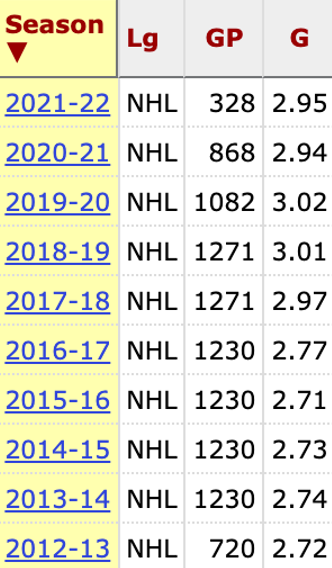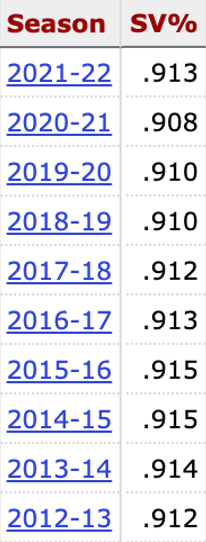A few thoughts from around the league as the NHL hits the one-quarter mark...
1. The season finally has a shape
It’s become accepted practice in hockey analysis to look at American Thanksgiving -- at roughly the quarter mark of each team’s 82-game schedule -- as an important checkpoint. The numbers tell us that 77 per cent of teams in a playoff position as of that date tend to make the post-season, meaning that teams on the outside looking in right now are likely starting to feel the landscape of their season take shape. It’ll be an uphill climb for them to get in, and that’s going to be their day-to-day from now on.
I say “from now on” because as a player there’s an ebb and flow to the season, and without a definitive turning point we’ve gradually come around a corner here.
For players, the first part of the NHL season is pure jockeying, individually and as a team. You jockey for the best linemates you can get, for special teams time, and to be in the good graces of the coaching staff. Everybody gets some opportunities in the first 20 games and those players who play well (or just get lucky) in those opportunities tend to see themselves get favourable positions within their own team, and with that, they get set up for “personal best” type seasons. Of course, the opposite happens too. From now on, it gets harder to take someone’s spot in the lineup, because the coach has done a lot of his mental sorting of the group.
As a team, you’ve had enough moments now that give you a sense of what your group is. The start of the season (the first five games or so) are exciting and everyone brings it and results don’t tell us a ton -- there’s loads of randomness as things settle. But as the season goes on, guys start picking up injuries and tiring by a per cent or two, and you start to see games where teams with the superior talent just "skills" themselves to a win or three. Under-talented teams that started hot run into some hard luck -- unable to find that one extra goal here and there -- and it becomes clear what they really are.
We’re at that point now for both teams and players. Teams that start en fuego like the Ducks and Sabres have come back to earth. Teams that started slow like the Lightning and Avalanche have found their way back. We’re into it now, meaning there are a few takeaways we can make.
2. The Ducks and Red Wings are legitimately better teams
Even with records of just over .500 in their past 10 games, both of these teams have shown enough speed and skill and improvement to make me believe they’re legitimately better. Oh weird, adding dynamic, exciting stars at both forward and defence helps, who knew?
Lucas Raymond and Moritz Seider, to go with Trevor Zegras and Jamie Drysdale, are among the handful of names I’m most excited about adding to the NHL this season. Zegras is italicized nasty out there, and Raymond is a dynamic offensive force, too. The first step in a rebuild is going from awful to watchable before becoming “good” and both of these teams are watchable now, thanks in large part to these four names.
3. The battle between scoring and goaltending has shifted
There was a time when the evolution of goaltending simply out-paced the evolution of shooting in the NHL. Goalies got better first, and our game suffered for it (assuming you like offence as most fans do), resulting in the league trying to limit the size of goaltending equipment.
At the same time goalies started putting on smaller gear the first wave of NHLers who grew up with truly functional, flexible, one-piece hockey sticks hit the NHL, and goalies were not ready.
Here’s scoring in the NHL by year over the past 10 seasons. The number on the right is goals per game by each team. Things ticked up steadily for a while there:

You’ll notice scoring took a step back last season, which is tough to explain. It was the shortened bubble year, which means there was so much noise, so many unique circumstances, it’s tough to speculate what brought it back down from three goals per game.
This season, though, there’s been a bounceback in goaltending. Here’s the average save percentage in the NHL by year over those past 10 seasons. Look from 2014-15 and 2015-16 on.

Average save percentage had trended down every season since 2015-16, but has seen a marked tick back up this year. I’m guessing it’ll settle in at more like .911 or .912, but goalies are fighting back this year.
4. It’s Connor McDavid, that’s your answer to whatever the question is
I’ve been an NHL awards voter for six of the past seven years (not last year as they cut back the voter list with bubble limitations), and I’m going to let you in on a little secret: if it’s close between Connor McDavid and Leon Draisaitl for the Hart Trophy this year, it will not be a close decision in my mind. It’s Connor.
There’s a tendency in these sorts of decisions to try to come off as the smartest guy in the room and overthink it, or worse, to just look at the stats and say “Leon has three more points so he gets my vote,” but here's what I know.
Everything the opposition does starts with game-planning for McDavid, which means he’s having the most positive impact for his teammates. He’s the best player in the world and constantly draws the attention of five defenders when he’s on the ice. He shapes the structure of the opposition. McDavid is this same player on 31 other teams, to varying degrees. Draisaitl would be similar to this on all those teams I’m sure, but I’m not certain it doesn’t cost him a handful of points or more if he’s not a part of a power play unit with 97. Draisaitl’s not reliant on McDavid to score, that’s not the point, but he is uniquely built to capitalize on the mess that’s created when McDavid is swirling about.
Draisaitl may legitimately be the NHL’s second-best player at this point. I’ve featured him on Hockey Central before Oilers’ games about once a week all season long. But if the Oilers had to be without one player for a playoff series, and you let them choose who it would be, who do you think they’d sit, and who would they want to dress? Your answer to that should give you your answer as to who’s their most valuable player.
And finally,
5. With the fresh start in Montreal, it’s Vancouver’s turn
The Vancouver Canucks are flailing, to put it mildly. They’re awful, 11 points back of the Ducks for third in the division with four teams between them, and the negativity around the group is impermeable. Sometimes a roster is so irredeemable that no matter who’s in charge it isn’t going to change. That ain’t this.
It may be too late on this season for Vancouver, which is an indictment of the inaction thus far in itself, but that team deserves a new beginning, too. There is talent within the roster, there is moveable talent if you want to rejig for more competitive years ahead, and you don’t want your young core going to the rink every day to be summarily executed by whatever opposition lines up against them night after night after night.
As mentioned in point one, the season has taken some shape and hardened a bit, but it’s not impossible to change the course of events for the next 60 games here. The Canucks are dragging their feet while the players are out there drowning, waiting for a life preserver to better days. They deserve one.
